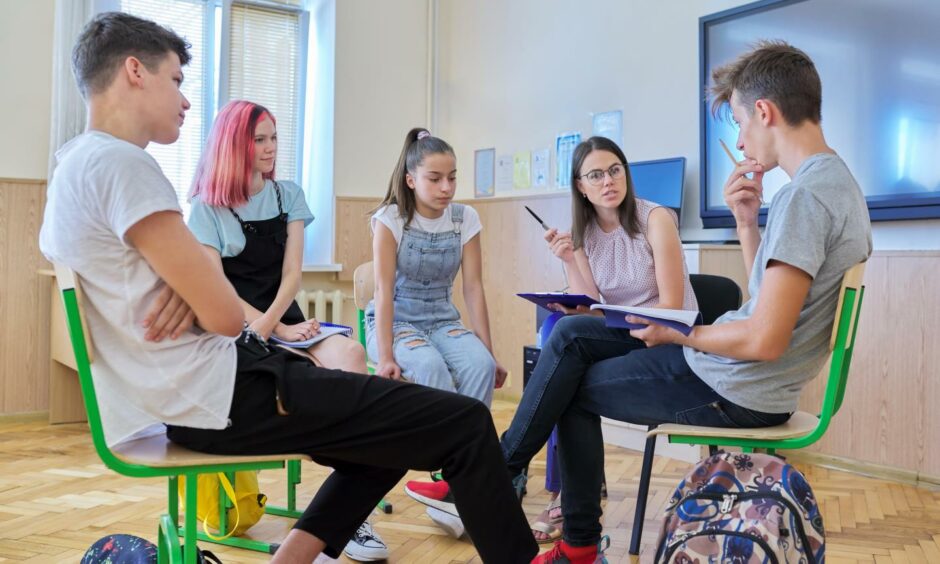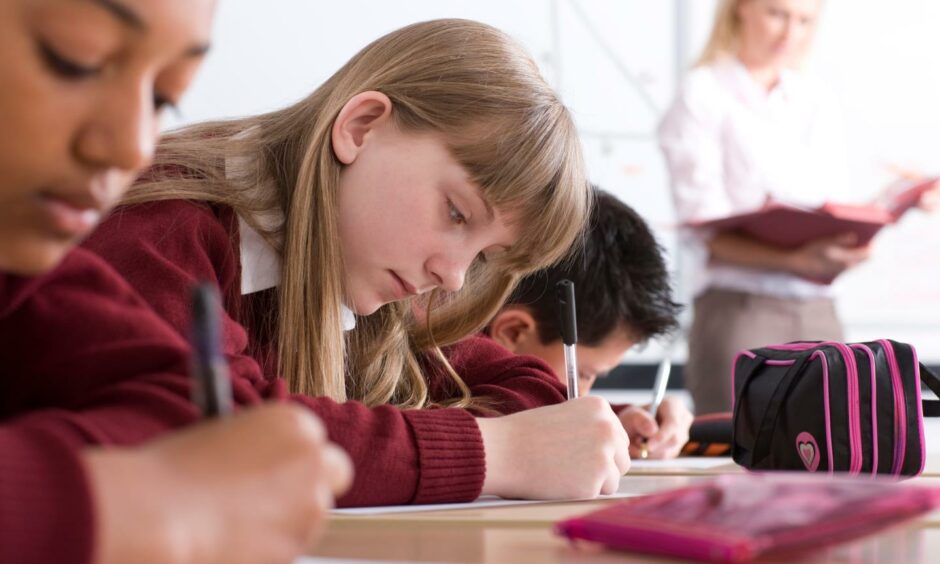Punitive action such as exclusion must be a “last resort” for dealing with bullying, says Education Secretary Shirley-Anne Somerville.
Ms Somerville spoke exclusively with The Courier after hearing of the case studies we have highlighted in our in-depth investigation into school bullying.
Restorative measures, like mediated conversations between the victim and perpetrator and parental intervention, are common solutions used to tackle bullying in schools.
But what happens when that is not enough to stop the bullying?
Our investigation revealed a culture of bullying exists within our schools – and often the victim is targeted repeatedly over a number of years.
Prevent the need for exclusion
Schools are expected to find alternatives to suspension and expulsion as far as possible.
This can be done by helping pupils who display bullying behaviour to understand the seriousness of their behaviour.
Ms Somerville, MSP for Dunfermline, said: “There is a focus on managing behaviour in the hope that we can prevent the need for exclusion.
“Exclusion should always be a last resort. This will vary from case to case.
“Head teachers and schools have a variety of ways they can deal with bullying and it is very, very important that they do deal with it because the long term implications for the young person that is the victim of bullying can be quite severe.
“We would certainly expect schools to be doing everything they can to help a victim of bullying through that process and support them through that.”
Alternatives to exclusion
An essential alternative, she says, is challenging the bullying behaviour and ensuring the pupil knows the damage their actions can cause.
A pupil may need to be separated from the victim if the incidents continue, and this can be done at break times or, in extreme cases, by moving them into different classes.
Schools and local authorities follow anti-bullying frameworks set by the Scottish Government, however they are given the freedom to develop their own policies, unique to their school community.
And support must be in place for the victim of bullying due to the adverse impact it can have on their young lives.
Challenging bullying behaviour
Ms Somerville added: “It is very important that schools take the issue of bullying very seriously, as does the Scottish Government.
“I appreciate that every case (of bullying) is different but certainly the cases that have been highlighted by The Courier really do bring to life the real impact that this has on young people’s lives.
“That impact can last a long time for them, even after the bullying has been resolved. It is absolutely critical that young people feel supported during this process.
“Clearly there is a way that schools can work with young people to ensure their behaviour is not accepted and not tolerated but (it is important) that changes can be seen.”
Anyone who witnesses bullying should report the incidents to a relevant authority, such as teachers, police or parents.
Scotland’s anti-bullying service RespectMe offers guidance for young people who are experiencing bullying and their parents and teachers.
If you feel like the bullying you witnessed at school or online was a hate crime, you can also report it to Police Scotland via 101.
Childline support young people with any worries they may experience, including mental health and bullying.
They can be contacted confidentially on 0800 11 11 or use their free 1-2-1 counselling service.
Read more from our bullying series
-
- ‘Mummy I just want to die’: Devastating words of Fife girl, 7, after years of bullying
- Bullying in schools: Our survey reveals 9 in 10 parents do not think schools can effectively tackle it
- Bullying advice: How to help children who are being bullied
- Types of bullying: What is classed as physical, sexual and prejudicial bullying?
- Devastating effects of bullying on children in the short and long term
- OPINION: I attempted suicide after years of bullying – schools need to take it seriously
- Autistic Angus teen terrified to go to school as pupil threatens to ‘kill him
- How to report bullying to schools and the police
- Mum says alleged assault of her 5-year-old son shows bullying happens at any age
- Race, religion and sexual orientation among main reasons for school bullying in Tayside and Fife
- Relentless bullying makes Autistic Angus teen pull her own hair out and say she wants to die
- Anti-bullying policies: Schools take restorative action to resolve bullying












